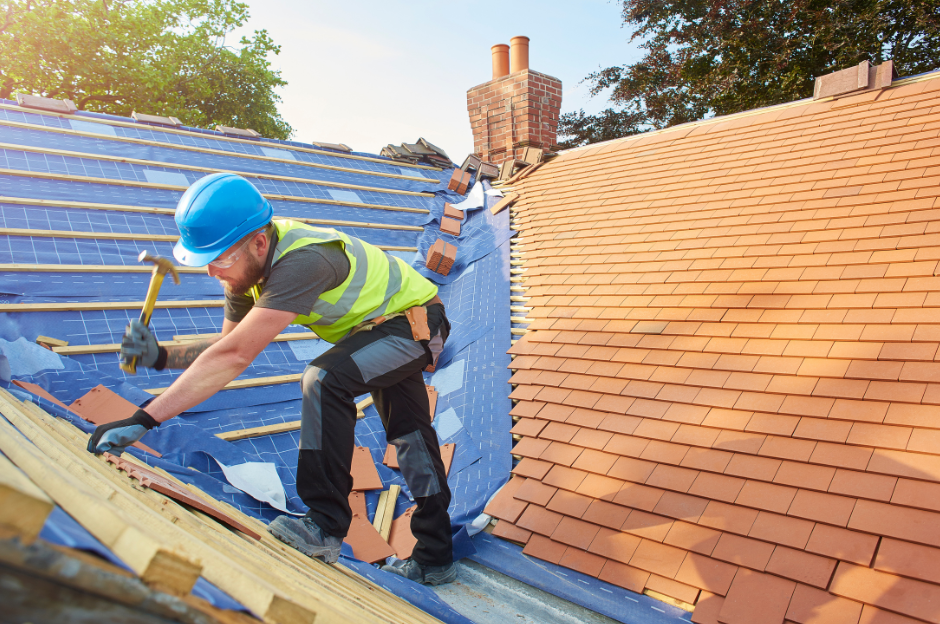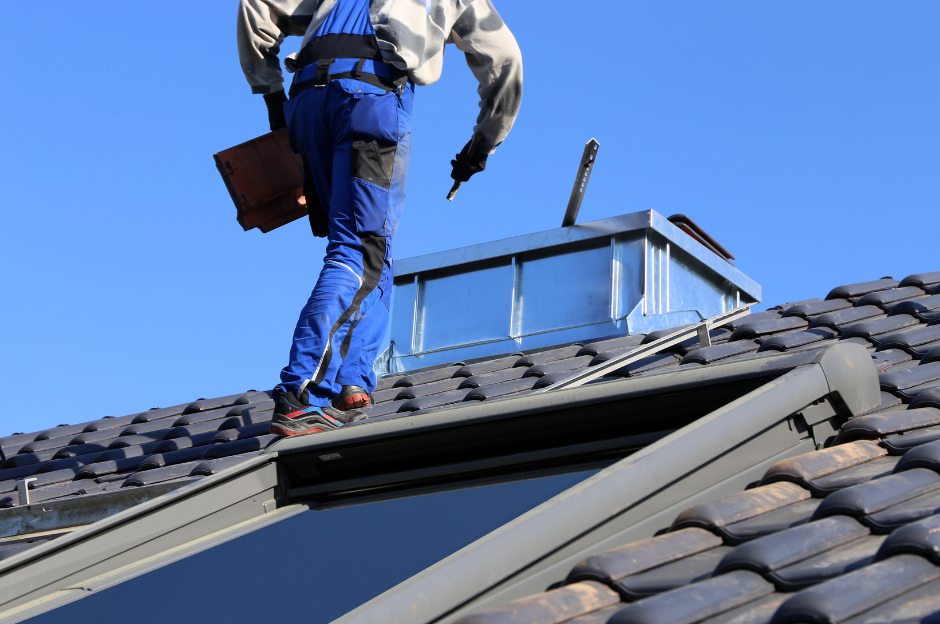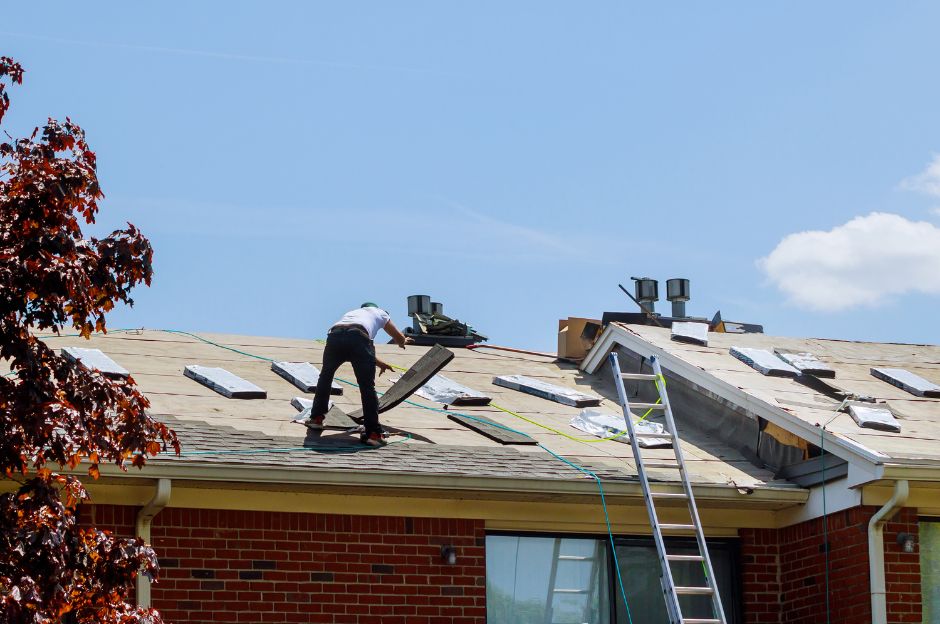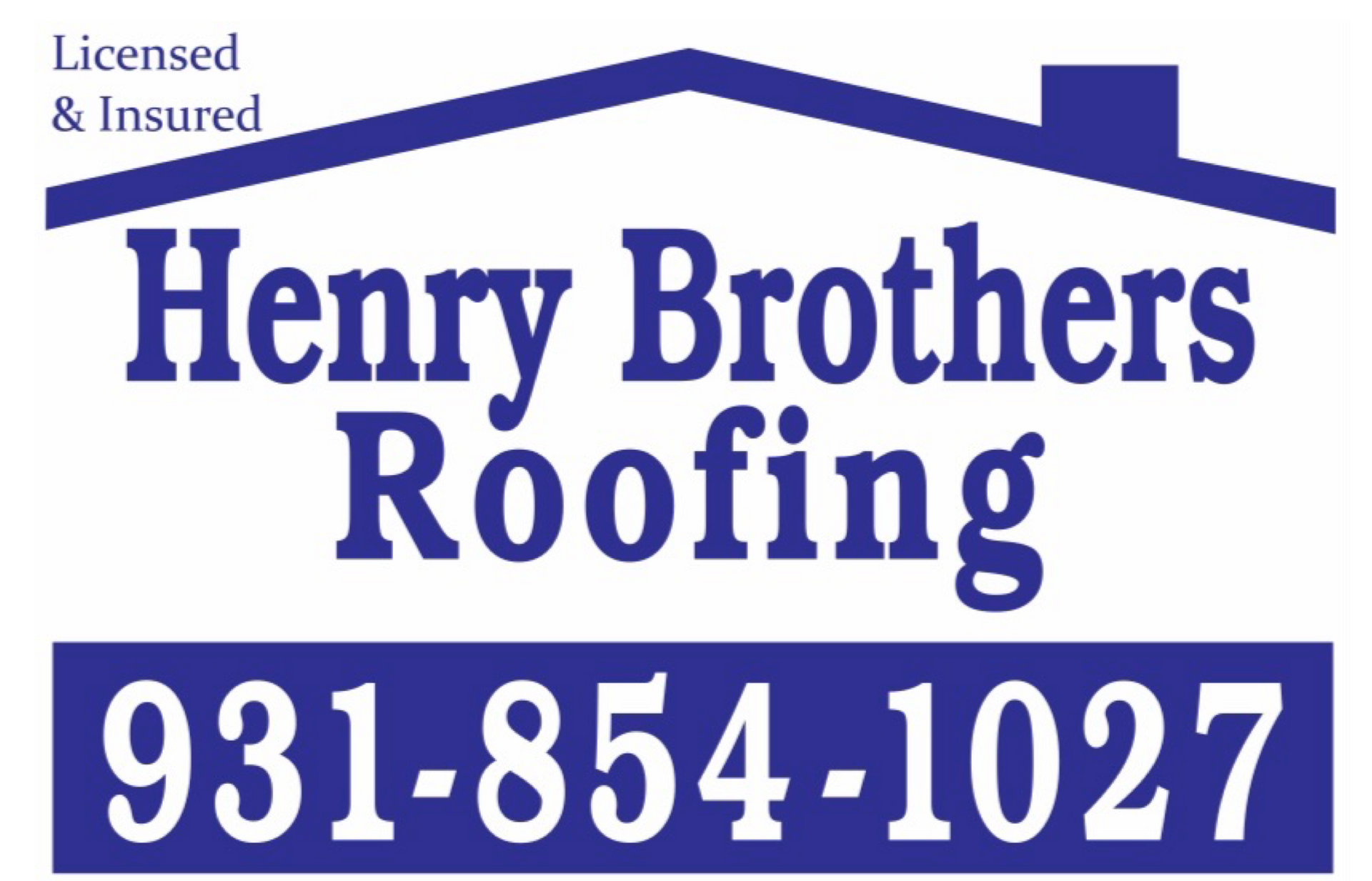Shielding Your Home: Recognizing the Top 5 Signs It's Time to Replace Your Roof and Crafting a Budget for It
January 5, 2024

Your roof, often the unsung hero of your home, endures the brunt of weather elements year-round, protecting you and your loved ones from rain, sun, snow, and wind. However, over time, even the most durable roofs may start showing signs of wear and tear. Recognizing these signs is crucial to maintaining the integrity of your home and avoiding potential costly damages. In this comprehensive guide, we'll explore the top five signs indicating it's time to replace your roof and provide practical insights on how to budget for this significant home investment.
Age of the Roof:
Normal Lifespan of Roofing Materials:
Different roofing materials have varying lifespans. Asphalt shingles typically last 20-25 years, while metal roofs can endure for 50 years or more. Understanding the lifespan of your roofing material is essential in gauging when replacement might be necessary.
Assessing Signs of Aging:
Inspecting the shingles for signs of aging, such as curling, cracking, or missing granules, can help determine the overall health of your roof. If your roof has surpassed its expected lifespan and shows visible signs of wear, it might be time to consider replacement.
Water Leaks and Interior Damage:
Water Stains on Ceilings and Walls:
Water stains on ceilings or walls are clear indicators of roof leaks. If you notice discolored patches or damp spots inside your home, it's crucial to trace the source of the leak. Leaks, if left unattended, can lead to structural damage and mold growth.
Attic Inspection:
Regularly inspecting your attic for signs of water infiltration, such as water stains, rotting wood, or damp insulation, can help you identify roof issues early on. Addressing these issues promptly can prevent more extensive damage and reduce repair costs.
Curled or Buckled Shingles:
Visible Shingle Damage:
Inspecting the condition of your shingles is a key part of roof maintenance. If you observe shingles that are curled, buckled, or missing, it indicates a loss of structural integrity. Damaged shingles compromise your roof's ability to protect your home effectively.
Shingle Granules in Gutters:
Another sign of deteriorating shingles is the presence of granules in your gutters. Asphalt shingles shed granules as they age, and their absence exposes the shingles to further damage from the elements. Checking your gutters for granule buildup is a simple yet effective way to monitor your roof's condition.
Moss or Algae Growth:
Impact of Moss and Algae:
Moss and algae growth on your roof not only diminish its aesthetic appeal but also pose potential risks. These organisms can trap moisture, leading to the deterioration of roofing materials over time. Additionally, moss and algae growth may indicate a roof that doesn't receive sufficient sunlight, making it more susceptible to damage.
Regular Cleaning and Maintenance:
Regularly cleaning your roof and addressing moss or algae growth promptly can extend its lifespan. However, if growth is persistent and widespread, it may be a signal that your roof is nearing the end of its useful life.
Energy Efficiency Concerns:
Decreased Insulation Effectiveness:
A deteriorating roof may compromise the insulation effectiveness of your home. If you notice a significant increase in your energy bills or experience difficulty maintaining a consistent indoor temperature, it could be a sign that your roof is no longer providing adequate insulation.
Investing in Energy-Efficient Roofing:
When considering a roof replacement, exploring energy-efficient roofing options can be a wise investment. Energy-efficient materials, such as cool roofing or reflective coatings, can contribute to better insulation and reduce your long-term energy costs.
How to Budget for Roof Replacement:
Get Multiple Quotes:
Obtain quotes from multiple reputable roofing contractors. This allows you to compare prices, services, and warranty offerings. A thorough evaluation of quotes ensures you make an informed decision based on your budget and the quality of work provided.
Consider Material Costs:
Different roofing materials come with varying costs. Asphalt shingles are generally more budget-friendly, while materials like metal or slate may have a higher upfront cost. Choose a material that aligns with your budget constraints while meeting your durability and aesthetic preferences.
Factor in Labor and Installation Costs:
Labor and installation costs are significant components of the overall budget. Professional installation is crucial for the longevity and effectiveness of your new roof. Ensure that your budget includes skilled labor costs to guarantee a high-quality installation.
Plan for Unexpected Expenses:
Roof replacement projects can sometimes uncover unforeseen issues, such as rotted wood or structural damage. Budgeting for potential surprises ensures that you have the financial flexibility to address unexpected expenses without compromising the quality of the project.
Explore Financing Options:
If the upfront cost of roof replacement exceeds your immediate budget, explore financing options. Some roofing contractors offer financing plans, and you can also explore home improvement loans or lines of credit. Carefully review the terms and interest rates to make an informed financing decision.
Prioritize Essential Repairs:
If a full roof replacement exceeds your budget, consider prioritizing essential repairs. Addressing the most critical issues first allows you to extend the lifespan of your existing roof while planning for a more comprehensive replacement in the future.
Take Advantage of Insurance Coverage:
If your roof replacement is necessitated by covered perils, such as storm damage, check if your homeowners insurance policy provides coverage. Review your policy details, document the damage thoroughly, and file a claim to potentially offset some of the replacement costs.
Conclusion:
Recognizing the signs indicating it's time to replace your roof is a proactive step toward protecting your home and maintaining its structural integrity. Crafting a budget for roof replacement involves careful consideration of material costs, labor expenses, and potential unexpected issues. By addressing roof replacement in a timely and strategic manner, you not only safeguard your home but also make a valuable investment in its long-term durability and resilience against the elements. A well-maintained roof ensures that your home remains a secure haven, shielding you and your loved ones for years to come.
Henry Brothers Blog

Multi-family buildings pose unique challenges for roofing—requiring durable, efficient, and cost-effective solutions that serve multiple households simultaneously. Selecting the right system and partner can significantly impact long-term maintenance and energy bills. Common Roofing Challenges in Multi-Family Properties Large surface areas Multiple penetrations (vents, HVAC units) Noise and disruption during installation High foot traffic for maintenance Energy efficiency Efficient Roofing Materials TPO (Thermoplastic Polyolefin): Lightweight, reflective, and energy-efficient. Ideal for flat or low-slope roofs. Modified Bitumen: Offers durability and weather resistance. Works well for larger structures. Metal Roofing: Long-lasting and low-maintenance. Higher upfront costs but excellent ROI. Asphalt Shingles: Budget-friendly and easy to repair. Better for pitched multi-family homes. Affordability Strategies Bulk Purchasing Discounts: Roofers often offer lower rates for large-scale projects. Energy Rebates and Tax Credits: Cool roofing materials may qualify for incentives. Roof Coatings: Extend lifespan and defer full replacements. Preventive Maintenance Plans: Regular inspections reduce major repair costs. Partnering with the Right Contractor Choose a roofing contractor experienced in multi-family dwellings. Look for: References from similar projects Warranty offerings Insurance and licensing Clear timelines and communication protocols

Your roof is one of the most defining features of your home’s architecture. A well-designed roof complements the style, era, and character of your house, enhancing both curb appeal and value. Whether you own a modern home, a Victorian masterpiece, or a Mediterranean villa, choosing the right roofing materials and design is essential. This article explores custom roofing solutions for different architectural styles, ensuring your roof is both aesthetic and functional. 1. Why Custom Roofing Matters A one-size-fits-all approach doesn’t work for roofing. Here's why customization is key: 🏡 Preserves Architectural Integrity The roof should match the home's era and design. A poorly chosen roof can clash with the architecture and reduce property value. 💰 Boosts Home Value & Curb Appeal A well-matched roof enhances visual appeal, making your home stand out. Homebuyers prefer houses with roofs that fit the overall design. 🌦 Enhances Durability & Efficiency Custom roofing accounts for climate, slope, and insulation. Choosing the right materials ensures longer roof life and energy efficiency. 2. Best Roofing Materials for Different Architectural Styles 🏗 Modern & Contemporary Homes Modern architecture focuses on clean lines, minimalism, and energy efficiency. Best Roofing Options: ✅ Flat Roofs – Achieve a sleek, contemporary look. ✅ Metal Roofing – Durable and complements modern aesthetics. ✅ Green Roofs – Eco-friendly and visually striking. ✅ Solar Panels – Integrate renewable energy solutions. 🏰 Victorian & Gothic Revival Homes These homes have steep-pitched roofs, turrets, and elaborate detailing. Best Roofing Options: ✅ Slate Tiles – Classic, long-lasting, and historically accurate. ✅ Wood Shingles – Adds charm and natural beauty. ✅ Decorative Metal Accents – Enhances ornate Victorian designs. 🏝 Mediterranean & Spanish-Style Homes Inspired by European coastal homes, these feature stucco walls and curved archways. Best Roofing Options: ✅ Clay or Terracotta Tiles – Traditional, weather-resistant, and elegant. ✅ Concrete Tiles – Durable and available in various textures and colors. ✅ Synthetic Spanish Tiles – Modern, lightweight alternatives with classic appeal. 🌲 Rustic & Cabin-Style Homes These homes emphasize natural materials and a cozy aesthetic. Best Roofing Options: ✅ Wood Shakes – Blends seamlessly with wooded surroundings. ✅ Metal Roofing (Rustic Finish) – Durable with a weathered, natural look. ✅ Green Roofs – Enhances sustainability and insulation. 🏡 Colonial & Traditional Homes These timeless homes focus on symmetry and classic proportions. Best Roofing Options: ✅ Asphalt Shingles – Affordable and available in classic shades. ✅ Slate Roofing – Elegant and historically accurate. ✅ Copper or Metal Accents – Enhances historic charm. 🏛 Mid-Century Modern Homes This style features low-sloped roofs, large windows, and open spaces. Best Roofing Options: ✅ Flat or Low-Slope Roofs – Clean, minimalistic aesthetic. ✅ Rubber or Membrane Roofing – Ideal for low-pitch roofs. ✅ Green or Living Roofs – Complements eco-conscious designs. 🏰 Tudor-Style Homes Tudor homes have steeply pitched gables and decorative half-timbering. Best Roofing Options: ✅ Wood or Synthetic Shake Shingles – Traditional and authentic. ✅ Slate Roofing – Enhances historic charm and durability. ✅ Architectural Asphalt Shingles – Mimics wood or slate at a lower cost. 3. Custom Roofing Features to Consider Beyond materials, adding customized elements can elevate your roof’s design. 🔹 Roof Color & Texture Dark roofs enhance historic and formal homes. Light-colored roofs reflect heat, ideal for warm climates. Textured materials (slate, shakes) add visual depth. 🏠 Roof Shape & Pitch Steep roofs fit Gothic and Victorian styles. Flat or low-sloped roofs match modern homes. Custom pitches enhance energy efficiency and durability. 🔆 Skylights & Roof Windows Adds natural light and enhances ventilation. Works well in modern, contemporary, and rustic homes. 🌞 Solar Roofing & Smart Technology Solar shingles blend seamlessly into modern & eco-friendly homes. Smart roofing systems adjust ventilation & insulation automatically. 4. Custom Roofing: How to Get Started 1️⃣ Consult a Roofing Expert Work with an architect or contractor specializing in custom roofs. Ensure they understand historical accuracy and climate considerations. 2️⃣ Choose High-Quality Materials Invest in durability, energy efficiency, and aesthetics. Select roofing that aligns with your home’s style and longevity needs. 3️⃣ Consider Long-Term Costs & ROI Some materials have higher upfront costs but last longer and increase home value. Energy-efficient options can reduce heating and cooling expenses. 4️⃣ Verify Local Building Codes Some roofing styles require special permits. Ensure compliance with HOA guidelines and historical district regulations.


